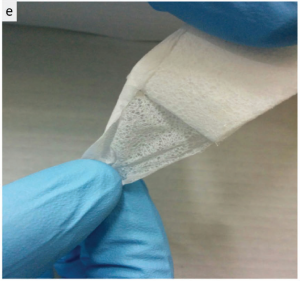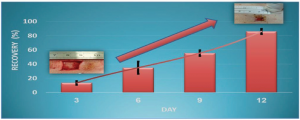One of the more gruesome consequences of diabetes is an increased susceptibility to chronic wounds. As rates of this disease skyrocket in the western world, the burden presented by chronic wounds grows too. It is estimated that in the U.S. alone, the yearly economic cost of this problem is now in excess of 20 billion dollars.
Wounds become chronic, in part due to the unwanted presence of matrix metalloproteinases. These enzymes normally mediate the initial inflammation response to an injury. In a healthy individual, these proteins are cleared out of the wound after this stage to allow the next steps in the healing process to take place. Wounds can become chronic when these enzymes are not cleared effectively, continuing the inflammation stage, and preventing normal healing.
When collagen is applied to a wound, it is able to remove matrix metalloproteinases, speeding the healing process. Generally, collagen is sourced from cows. Unfortunately, universal uptake of this approach is limited, due to the risk of spreading mad cow disease.
In an effort to establish a cheap, readily available, and safe source of collagen, an international team recently investigated whether jellyfish collagen might be a viable alternative.

The prototype wound dressing.
The wound dressing is shown above. It consists of three main components; jellyfish collagen, a protein called “qmucin” that is also derived from jellyfish, and a synthetic polymer called polycaprolactone. The team conducted an exhaustive series of experiments to determine the ideal ratio between these components and also the most effective fabrication technique.

Healing wounds using the prototype dressing.
With a prototype dressing in hand, the team embedded it with an antibacterial agent. They then compared the healing progression of pig wounds treated with the prototype dressing, to wounds treated with a commercial dressing. It was found that not only did both dressings effectively facilitate healing, some aspects of the healing process actually proceeded faster with the prototype jellyfish based material.
The authors hope that these promising results may drive further research into the use of jellyfish as a safe, reliable source of material for wound dressing.

















